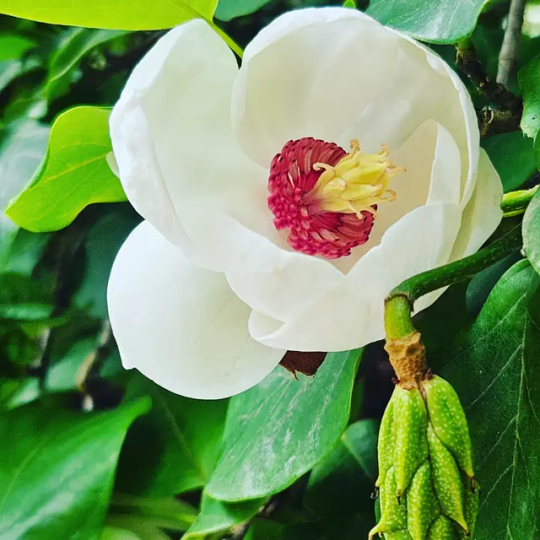#national orchid garden
Text
Fanciful Pitchers

Albany Pitcher Plants taking it cool in the Sembcorp Cool House.
The smaller sensor with its generous depth-of-field made keeping this whole bunch of pitchers in focus an easy task.
#albany pitcher plant#cephalotus#flora and fauna#flora photography#fujifilm xs1#gardening#national orchid garden#singapore botanic gardens#unesco world heritage site#photographers on tumblr
0 notes
Text
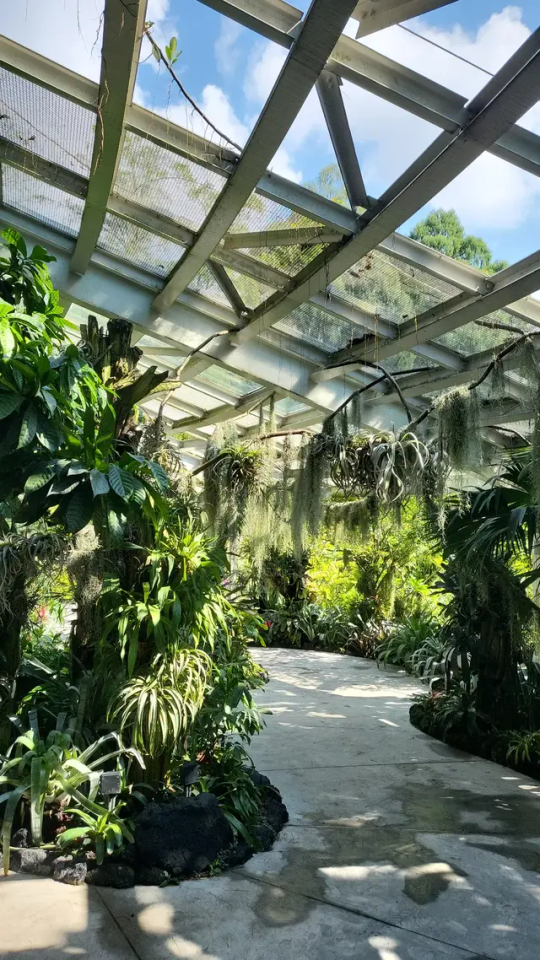

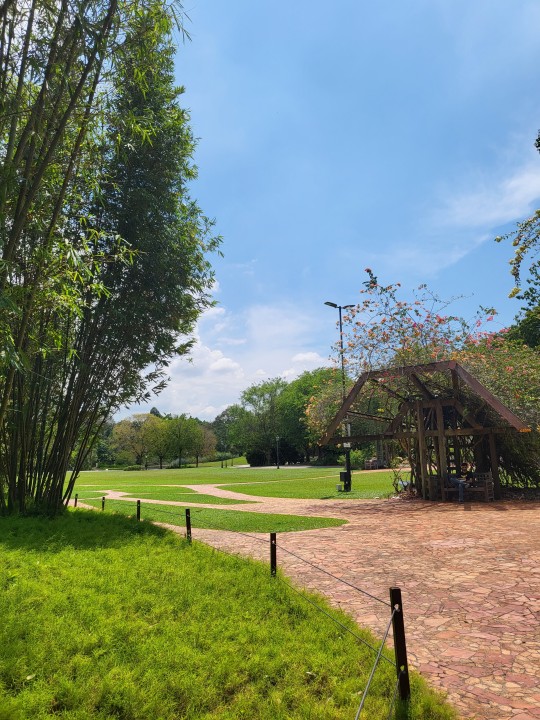


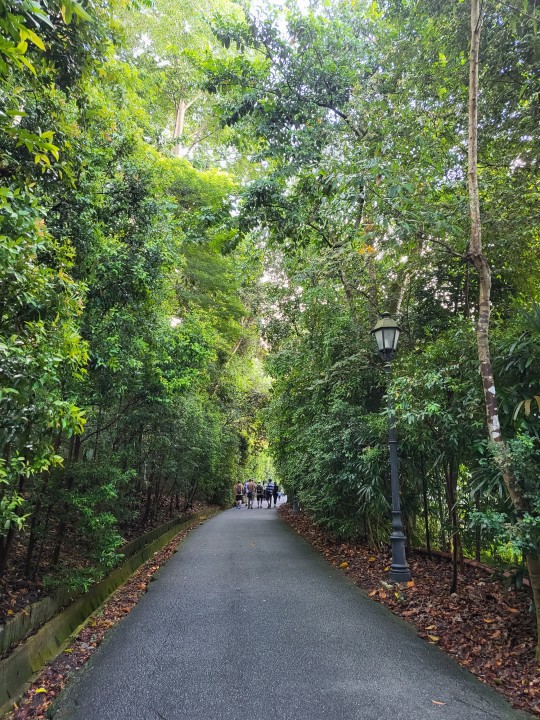
my environmental history class went to the national orchid garden @ singapore botanic gardens today! i've only ever went to sbg for performances so it was really cool exploring the area today :') a very lovely morning walking around in nature
#chloeisntstudying#break#singapore botanic gardens#national orchid gallery#sg's orchid diplomacy is so iconic tbh#nature#singapore
9 notes
·
View notes
Text

National Orchid Nursery is situated inside Singapore Botanic Gardens. It spreads across three hectares on the professional flowerbed's most elevated slope. The nursery's arranged slants show more than 1,000 orchid species and 2,000 crossovers. This lovely nursery is separated into four zones that follow the four seasons with an unmistakable variety subject for each zone. Read more at: Enjoy Orchid at National Orchid Garden: Must-do in Singapore (thebestsingapore.com)
#nature#landscapes#travel photography#travel blog#tourist attraction#National Orchid Nursery#Singapore Botanic Gardens
4 notes
·
View notes
Video
n838_w1150 by Biodiversity Heritage Library
Via Flickr:
The gardener's assistant :. London ;Blackie & Son,1859.. biodiversitylibrary.org/page/57724435
#Gardening#Horticulture#U.S. Department of Agriculture#National Agricultural Library#bhl:page=57724435#dc:identifier=https://biodiversitylibrary.org/page/57724435#Augusta Innes Withers#HerNaturalHistory#WomenInScience#flickr#phalaenopsis grandiflora#Correa cardinalis#Moth orchid#moon orchid#mariposa orchid#anggrek bulan#orchid#orchids#eastern correa#Correa reflexa#common correa#correa#native fuchsia#botanical illustration#scientific illustration
4 notes
·
View notes
Photo





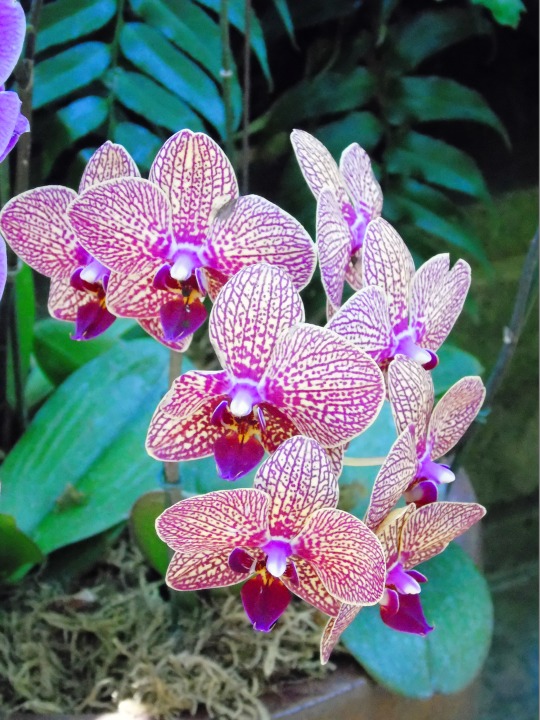

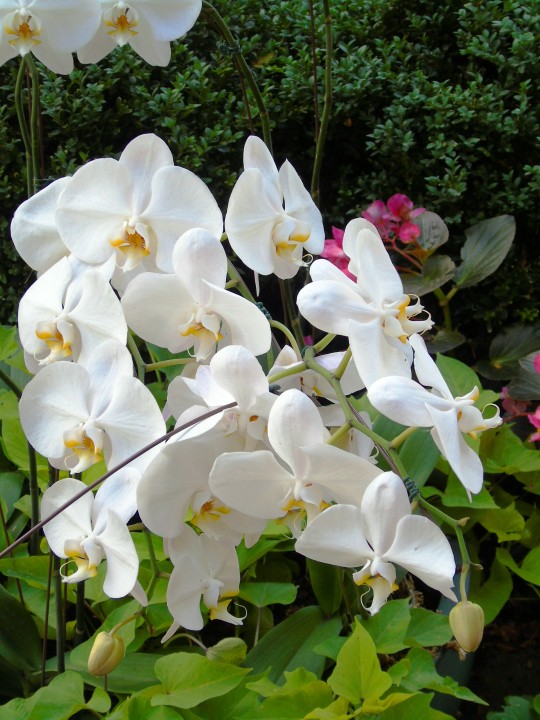


National Orchid Day
With their intricate blooms and delicate petals, orchids bring beauty and elegance to any setting. They come in a range of colors and sizes, making them a versatile addition to any collection.
With more than 28,000 species, the orchid is a unique and interesting flowering plant that occurs worldwide. More than 200 species reside in North America, and many others can be found in hotter, more tropical climates. With their large, amazing blooms that often have curious shapes, orchids offer a complex range of beauty and color to the plant world.
National Orchid Day is here to celebrate this dazzling flower, as well as the challenging story of the family that inspired it all.
History of National Orchid Day
Although this is certainly a day to recognize and appreciate the beauty of this unique flower, National Orchid Day actually has an emotional story behind it as well. The day was established by a couple named Mike and Faith Young, who fell in love with the magnificent flower while volunteering at an orchid preserve on the outskirts of Chiapas, Mexico.
Later, when they were pregnant with their first daughter, they decided to name her Orchid in honor of their experiences with the beauty of this delicate plant. Sadly, baby Orchid did not make it through the birth process. From that time in April 2014, the Young family looked for ways to find beauty from tragedy.
The founding of National Orchid Day is one of the ways that the Youngs, along with their friends and family, have kept the memory of their little girl alive while, at the same time, bringing respect and attention to this amazing flower.
Take some time to observe National Orchid Day to show appreciation for this special flower as well as the special people in your life.
How to Celebrate National Orchid Day
Celebrate and enjoy National Orchid Day in a wide variety of ways, including some of these ideas:
Get or Give an Orchid
Flowering plants can add a particular kind of joy and delight to homes and orchids are no exception. Those who want to share in the allure and elegance of this special flower might want to consider getting one from a garden store and bringing it home. Or, even better, give an orchid as a gift to a beloved friend or family member in honor of National Orchid Day.
Show Care to Loved Ones
One special way to observe National Orchid Day might be to simply take the time to show friends and family members how much they are loved and appreciated. Since the day was founded in honor of a lost family member, it’s an especially poignant time to give an extra hug and say “I love you”.
Learn More About Orchids
Take some time on National Orchid Day to learn some more about this special flowering plant. Get started with some of these facts:
Orchids are believed to be one of the oldest families of flowering plants.
This magnificent plant has the tiniest seeds in the plant world.
Orchids can take from 5-7 years to bloom once started. Some bloom for months and others only hours.
The vanilla bean comes from a species of the orchid plant family.
Source
#Miami Beach Botanical Garden#Lincoln Park Conservatory#Chicago#travel#San Diego#Balboa Park#Botanical Building#common spotted orchid#widlflower#Sweden#flora#flower#USA#vacation#summer 2014#nature#close up#blooming#National Orchid Day#15 April#NationalOrchidDay#free admission#indoors#outdoors#original photography#tourist attraction#landmark
2 notes
·
View notes
Text
Folks, if you are talking about or sharing anything about “native plants”, please mention *your* location and *where* the plants are native to, not only country-wise but environment-wise.
So many people are learning about rewilding, gathering, foraging and gardening for food in harmony with the environment entirely online. Making your information clear for those people takes you little effort and limits confusion and misinformation getting out there.
The internet isn’t only “not just America”; many nations contain different environments with materially different conditions.
I live in Scotland. Most of the gardening and foraging information I get in the UK is calibrated for the south of England, which is a really different environment from mine - spring can come up to a month later and the south is semi-arid, which Scotland is *not*.
These days I actually look at a lot of Danish and Swedish gardening advice because their environment is a lot closer to mine. And that’s within one small nation. The world is wide and full of incredible diversity.
I am seeing UK-based pages sharing information about “native lawns” which contain plants from arid areas of the US because there’s no specificity in the original post. A small amount of information in the post, even a few lines, about locations, environments, context and goals would prevent this sort of confusion and incorrect information from spreading.
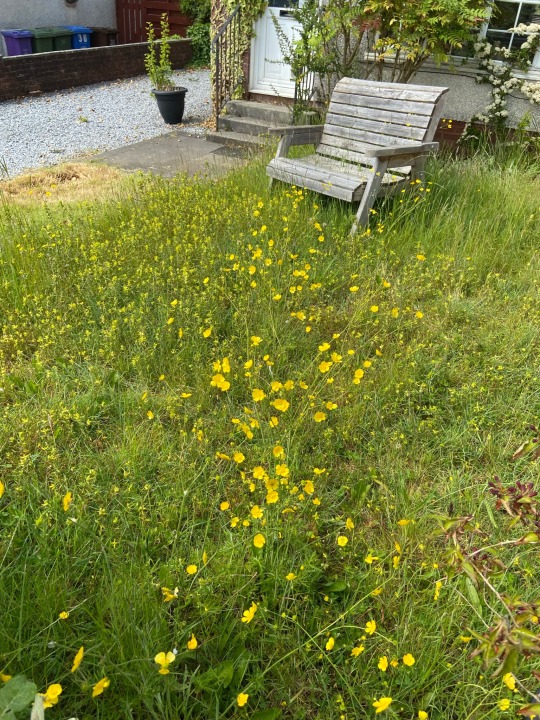
A lot of people are really enthusiastic and ready to be engaged in gardening for food, rewilding, gardening in harmony with the environment, soil preservation etc, but confusion and feeling they can’t trust information sources can really kill that. Make it easy for people new to the movement where you can, please.
ID: some photos of my native rewilded lawn from Scotland, UK, containing buttercups with butterfly eggs on them, yellow rattle, a willow tree, wild orchids, and many different grasses, and my small garden pond upcycled from a Belfast Sink surrounded by wild grasses, ladies’ mantle and wild geraniums and with woundwort and pondweed growing in it. There is a short path mowed in the lawn to allow safe passage of mobility devices and a wooden bench sitting in the long grass. A somewhat overgrown gravel drive and a front door with three steps up to it can be seen. The photos were taken in early June 2023.
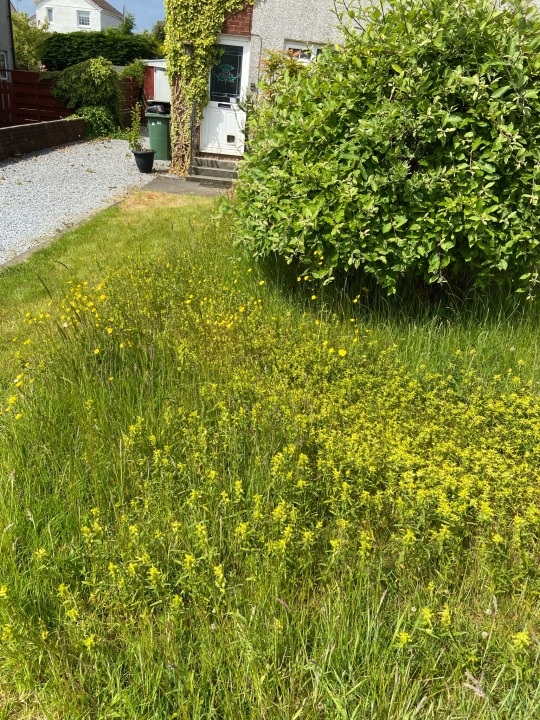
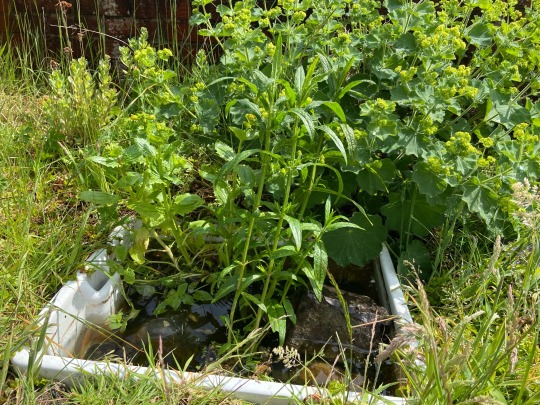
#rewilding#rewilding uk#rewilding scotland#soilhealth#food gardening#native plants#foraging#disabled gardener#clarity#teaching and learning online#prevent confusion and misinformation#biodiversity
504 notes
·
View notes
Text
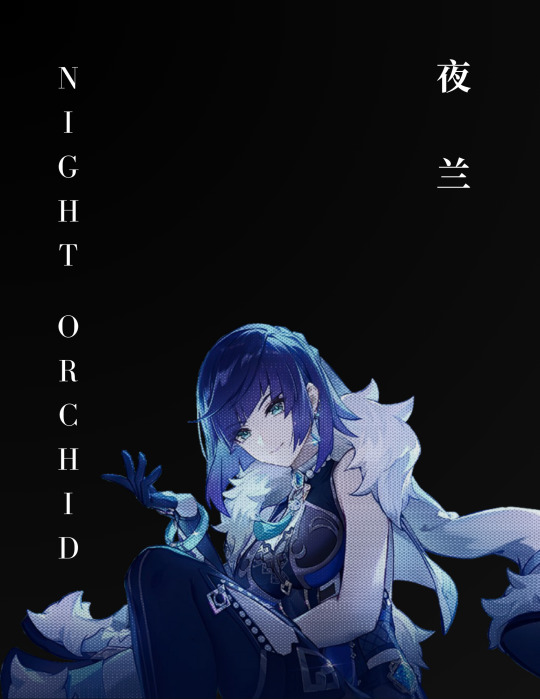

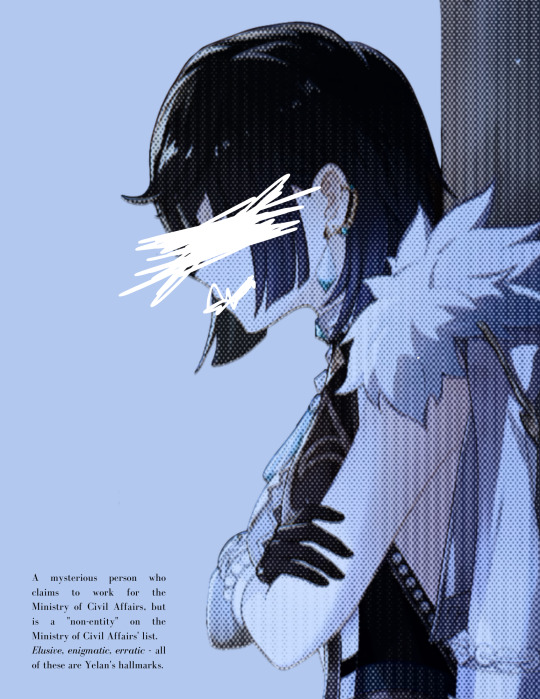
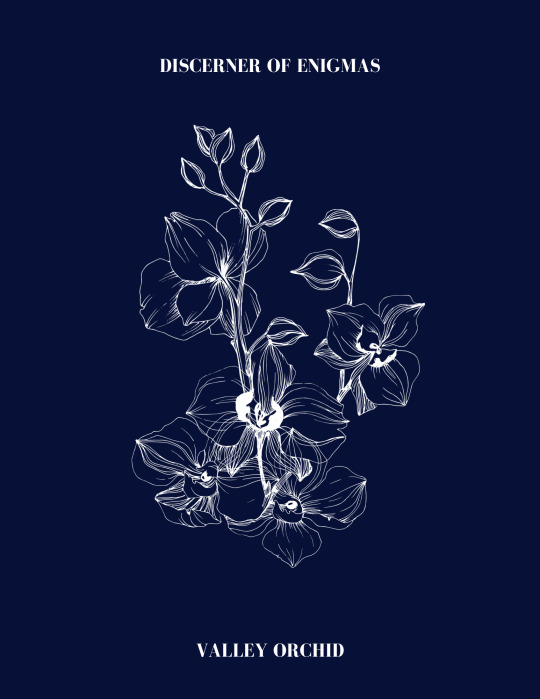
From other nations in Teyvat to even the perilous Abyss…
Every secret and perilous demesne shall become a garden where orchids bloom.
Stealthily she roams the night, stars shining upon her in the skies.
— Yelan's Character Story 2
#genshinet#genshinedit#dailygaming#videogamewomen#genshincreations#genshinimpactedit#genshin edits#userjidai#kilruas#原神#夜兰#yelan#teyvat posts#WOOOOOHOOOOOOOOOOOOOOO 4.0 YELAN RERUN !!!!!!!!!!!!!#QUEEN PLEASE COME HOME WITHIN THE NEXT 10 PULL.......... I NEED YOU ON HYPERBLOOM TEAM T_T#gl to anyone pulling may wanters be havers etc <3#genshin yelan#genshin graphics#genshin impact#genshin edit#genshin graphic#genshin gfx#genshin impact gfx#yelan gfx#yelan graphics#also this graphic is so wretched i went through like 4 mental breakdowns trying to decide what color to put for the orchid panel OTL#hopefully it looks good to someone out here.............
169 notes
·
View notes
Text

Choices March Challenge 2024
I asked and you answered. It seems like flowers and spring are prompts you are interested in for the March Challenge!
I hope you enjoy the prompts I chose. There is a mix of flowers, spring related words, March holidays, dialogue prompts, and visual floral prompts. I also posted some floral dividers that you're welcome to use.
Have Fun + Happy Creating!
Prompts + Guidelines below the cut!

Flowers (these are some possibilities, but all flowers are accepted)
Bleeding Heart Flower
Carnation
Chrysanthemum
Coneflower
Corpse Flower
Daffodil
Daisy
Gladiolus
Hydrangea
Iris
Jade Vine
Lavender
Lilac
Lily
Marigold
Moonflower
Nightshade
Orchid
Pansy
Peony
Poppy
Rose
Snapdragon
Sunflower
Tulip
Wildflowers
Spring
Awakening
Baby animals
Butterflies
Clear skies
Daylight saving
Fresh air
Growth
New Life
Outdoor activities + sports
Picnics
Rain boots
Rainy days
Renewal
Spring cleaning
Sunny weather
Warm temperatures
Longer days
Umbrella
March Holidays (these are some possibilities, but all March Holidays are accepted)
March 01: National Peanut Butter Lover's Day
March 08: International Women's Day
March 09: National Barbie Day + Get over it Day
March 11: National Napping Day
March 15: The Ides of March
March 16: National Panda Day
March 17: St. Patrick's Day
March 18: Awkward Moments Day
March19: First day of spring
March 23: National Puppy Day
March 30: National Take a Walk in the Park Day + Doctors' Day
March 31: Easter
Dialogue Prompts
"The flowers in the park seem to have a secret language, don't they?"
"Why does every spring bring back memories of that garden?"
"I can't believe you kept that secret from me all these years."
"Why do you always have to be so stubborn?"
"I never thought I'd see you again."
"Do you believe in second chances?"
"I thought we were in this together."
"You're not the person I thought you were."
"Sometimes silence speaks louder than words."
"Is it too late to start over?"
"I don't know who I am anymore."
"We're running out of time."
"Why are you really here?"
"Your laughter is my favorite melody."
"If our love story were a book, every page would be filled with the softest words and the sweetest kisses. What chapter are we on now?"
“Will you please shut up”
“Of all the things i love about you, this is my favorite.”
Visual Prompts:
If one of these inspire a creative work from you feel free to use it. You can list the prompt topic + # (ie: Rainbow 3)

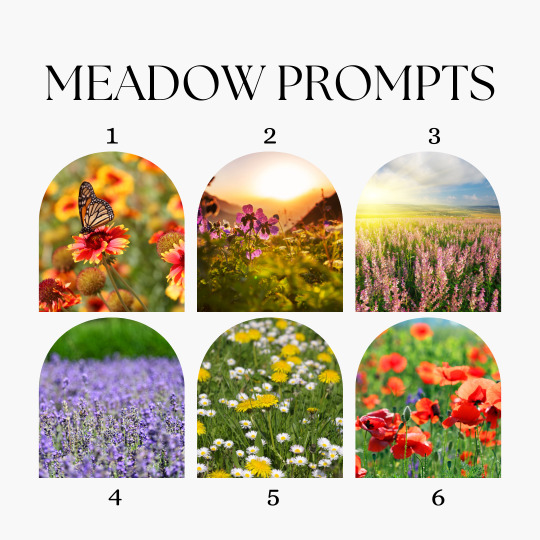
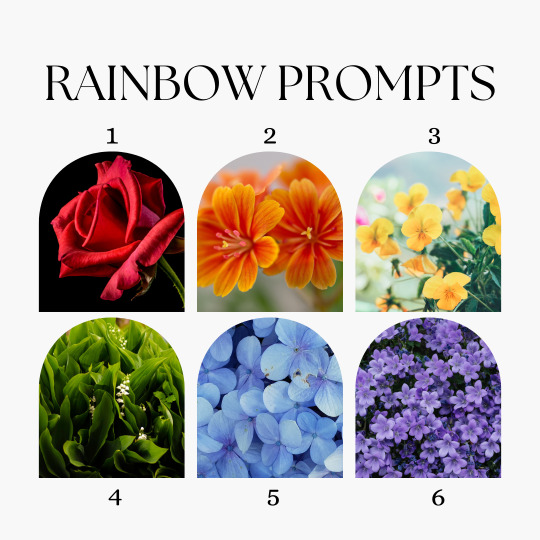

Guidelines + Rules
Submitted works will be featured on a weekly masterlist
Every form of creative work can be submitted: fanfiction, drabbles, moodboards, edits, drawings, poems, songs, sketches, and more—all are welcomed.
Work from any book and story from the Choices (and Pixelberry) universe are welcome (new and old alike)!
You can participate as many times as you want during the month
Clearly list the prompt your used
You can combine submissions for this event and others
Please add a cut to avoid long posts and exposing other fans to triggering/disturbing content.
If your work is NS*W please label it as such and use appropriate warnings. Adult content should be hidden under the page break.
You can get creative with the prompts. It can be a variation of the word and/or concept. It doesn’t have to be exact or literal. If the word inspires a train of thought that led you to something different, put that in the notes and send it in! Have fun with it! Make them work for you! The ultimate goal is just to find joy in creating!
Please tag @choicesmonthlychallenge and if you’d like to add me you can do so as well~ @lovealexhunt (feel free to DM me your work too since Tumblr tags are fickle)
Please do not submit work that has been created with AI. Works that contain AI will not be reblogged. If reblogged inadvertently and I find out they have AI, they will be deleted.
Late entries will be accepted through April 5
#choices#choices game#playchoices#choices stories you play#choices monthly challenge#choices march challenge#choices march challenge 2024#choices monthly challenge 2024#march2024
60 notes
·
View notes
Text

Aranda Christine Orchid (Arach. hookeriana x V. Hilo Blue), National Orchid Garden, Singapore
76 notes
·
View notes
Text
Dancing In An Orchid
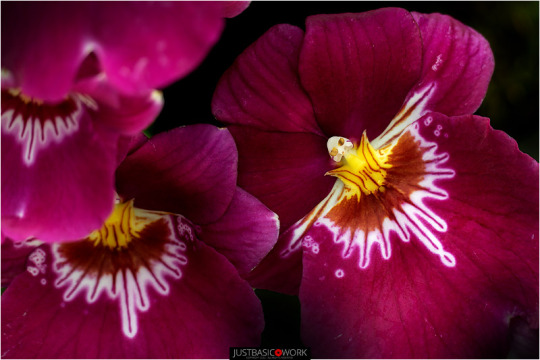
These Miltoniopsis orchids were captured by Nell as she was drawn to the little 'dancers' in the orchids. Image out of the 1-inch sensor looked a little flat. So some 'burning' in post was applied to mitigate that a bit.
#miltoniopsis#orchids#flora and fauna#flora photography#gardening#national orchid garden#singapore botanic gardens#unesco world heritage site#leica 25 400mm#panasonic fz1000#photographers on tumblr
1 note
·
View note
Text
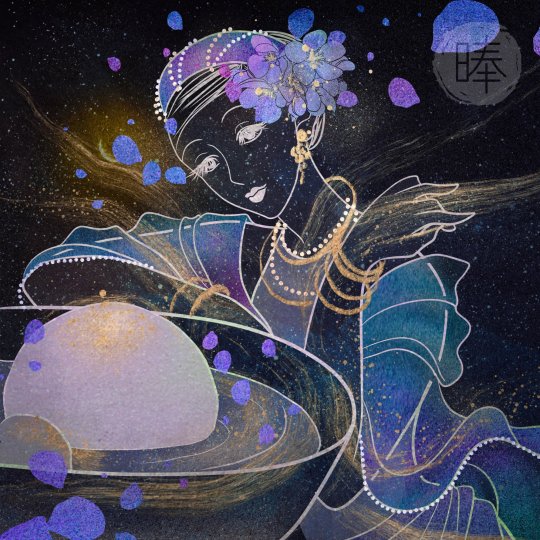
Art by Not A Starchild
HỒ XUÂN HƯƠNG WAS A BISEXUAL?
(Tiếng Việt ở dưới)
Hồ Xuân Hương 胡春香 (1772 – 1822) was one of the greatest poets in Vietnamese history, nicknamed Lady of Nôm Poetry. Most of Hồ Xuân Hương’s works were able to escape the constrained restrictions of traditional literature to reveal her own voice; many called her distinctive language as “serenely profane.” Her poems were famous for their bold sensuality, especially her direct yet flowery depictions of sexual intercourse, completely different from the folk poems of similar motifs by Vietnamese women.
“Congratulations to whoever, skillfully
Planted the four posts of the swing, beautifully.
Some people climb aboard to swing, while others
Are just quiet onlookers, observing and smiling.
Curving his knees, the boy arches his back.
Twisting her wasp waist, the girl pushes her bosom.
Four pink pant-tails are flapping in the wind.
Two pairs of jade legs stretch side by side.
For these spring games, how many know its true meaning?
Once the posts are removed, lie deserted holes!”
(The Swing)
However, Hồ Xuân Hương not only liked to describe copulation between men and women, but she also enjoyed detailing the female form through sensuous imagery, as if she herself were being enchanted by her own words.
“My body is both white and round,
In water and hills, I now swim, now sink.
Whether I be soft or hard, depends on your playful hand,
But I still shall keep my true red heart.”
(The Floating Cake, Copy of Xuân Hương Poetry version)
“A gorge, a gorge, and yet, the same old gorge.
Praise to whoever has gouged out this scene:
A lurid red cave with a bushy arch,
And rich green boulders covered with algae.
Now the stiff wind blows, shaking pine branches.
Dewdrops dripping from willow leaves.
You who are virtuous, or saintly, who hasn’t tried,
Even with weak knees, exhausted feet, to mount it?”
(Ode to Ba Dội Gorge, Recorded Collection of National Literature version)
“Summer breeze gently flows from the east,
A girl lies to rest but she slips into a deep sleep.
Her bamboo comb is loosely attached to her hair,
Her pink undergarment drops low on her waist.
Virgin dew still veils her two fairy mounts,
Water has yet flown through her garden of paradise.
Upon noticing, a gentleman hesitates to pass by,
Much difficult to leave but troubled if he stays.”
(Ode to Sleep, Recorded Collection of National Literature version)
Normally, these poems were analyzed through heteronormative lens, in which Hồ Xuân Hương saw herself as the women in her works, displaying the feminine sexual power under Vietnam’s patriarchal oppression. However, when applying queer theory, these works could be viewed from a different perspective: Hồ Xuân Hương might’ve been writing from the man’s point of view. This was merely a hypothesis, but if the phenomenon of feminized Confucian scholars existed, then there could also exist a masculinized female scholar. Under queer theory, if Hồ Xuân Hương was indeed writing under a male gaze, her works would explode in homoerotic sensuality, particularly of sapphic nature.
Furthermore, Hồ Xuân Hương also had a poem addressed to a woman named Mộng Lan (literally “orchid dream”). There were many theories to explain this work: maybe Mộng Lan was the nickname of a certain man; maybe Mộng Lan was a close friend of hers. But once the poem’s atmosphere was clearly displayed, one could feel the evocation of romance.
“The wind already blows orchid breeze,
But the air grows cooler as we meet.
The ode to snow continues to echo,
My unfinished wine cup still awaits the moon.
Chariots, cannons, and horses fight bravely on the chessboard,
The instrument strings in twangs and twings,
To whoever dreams of my soulmate,
Please don’t hesitate to speak.”
(To the Flirtatious Lady Mộng Lan, Collection of Unwanted Weed version)
Did the Lady of Nôm Poetry not only write to undermine the Confucian patriarchy, to challenge the oppression of female sexual expression, but also to break the standard of sexuality and gender identity? Could she not only like men, but also women? Could she be bisexual?
In the 17th and 18th centuries, Vietnamese society suffered greatly under the ravaging wars between Cochinchina and Tonkin. While Cochinchina of the south was more relaxed in ideologies, the northern Tonkin was restricted greatly due to Confucianism. According to historian Tạ Chí Đại Trường, due to political and moral suppression, many northern Vietnamese authors would borrow the perspectives and words of women, essentially hiding under a feminine shadow, writing metaphors through another gender. They became known as feminized Confucian scholars. He also noted that many scholars also hid under the pen name of Hồ Xuân Hương.
==================
HỒ XUÂN HƯƠNG LÀ SONG TÍNH LUYẾN ÁI?
Hồ Xuân Hương 胡春香 (1772 – 1822) là một đại thi hào của Việt Nam, được mệnh danh là Bà chúa thơ Nôm 婆主詩喃. Hầu hết thi ca Hồ Xuân Hương theo dòng chảy chung đã thoát được các quan niệm sáng tác cố hữu vốn đề cao niêm luật chặt chẽ để bộc lộ được tiếng nói của thời đại mình; có nhiều người cho rằng đặc sắc của thơ bà là “thanh thanh tục tục 清清俗俗.” Thơ của Hồ Xuân Hương nổi tiếng táo bạo, đầy gợi cảm, đặc biệt là các bài miêu tả giao hợp rất chân thật, bạch hoá tình dục một cách khác hoàn toàn các thơ ca dao cùng mô típ của phụ nữ Việt Nam.
“Bốn cột khen ai khéo khéo trồng,
Người thì lên đánh kẻ ngồi trông.
Trai co gối hạc khom khom cật,
Gái uốn lưng ong ngửa ngửa lòng.
Bốn mảnh quần hồng bay phấp phới,
Hai hàng chân ngọc duỗi song song.
Chơi xuân đã biết xuân chăng tá,
Cọc nhổ đi rồi, lỗ bỏ không!”
(Đánh đu)
Thế nhưng, Hồ Xuân Hương không chỉ thích miêu tả tình dục giữa trai với gái, mà còn thích diễn tả thân thể phụ nữ một cách mê hoặc gợi tình, như thể bà cũng đang bị từng chữ của mình hấp dẫn vào.
“Thân em vừa trắng lại vừa tròn,
Bảy nổi ba chìm mấy nước non.
Mềm rắn nhờ tay quân tử vọc,
Khăng khăng vẫn giữ tấm lòng son.”
(Bánh trôi nước, bản Xuân Hương thi sao 春香詩抄)
“Một đèo một đèo lại một đèo,
Khen ai khéo đặt cảnh cheo leo.
Cửa son đỏ hoét tùm um móc,
Hòn đá xanh rì lún phún rêu.
Lắt lẻo cành thông cơn gió thốc,
Đầm đìa lá liễu giọt sương gieo.
Hiền nhân quân tử ai là chẳng,
Mỏi gối chồn chân vẫn muốn trèo.”
(Vịnh đèo Ba Dội, bản Quốc văn tùng kí 國文叢記)
“Mùa hè hây hẩy gió nồm đông,
Tiên nữ nằm chơi quá giấc nồng.
Lược trúc chải cài trên mái tóc,
Yếm đào trễ xuống dưới nương long.
Ðôi gò Bồng Đảo sương còn ngậm,
Một lạch Đào Nguyên suối chửa thông.
Quân tử dùng dằng đi chẳng dứt,
Đi thì cũng dở ở sao xong.”
(Vịnh nằm ngủ, bản Quốc văn tùng kí 國文叢記)
Bình thường thì những câu thơ này đều được phân tích theo định chuẩn hoá dị tính, là bà xem mình trong quan điểm của các cô gái trong thơ, hiển thị sức mạnh tình dục của đàn bà dưới áp chế của phụ hệ. Thế nhưng, nếu ứng dụng thuyết lệch pha, thì có thể xem các loạt thơ này dưới ánh nhìn khác: Hồ Xuân Hương có thể đang viết dưới quan điểm của các quân tử. Đây chỉ là giả thuyết, nhưng nếu đã có hiện tượng nhà Nho lại cái, thì không việc gì cái không thể lại nhà Nho. Nếu đọc các câu thơ dưới thuyết lệch pha, là bà thơ Nôm đang viết dưới ánh nhìn của đàn ông, thì thơ sẽ biểu lộ rạch ròi những miêu tả gợi cảm hướng tới cảm quan đồng tính, cụ thể là đồng tính nữ.
Không chỉ thế, Hồ Xuân Hương còn có một bài thơ gửi một nữ sĩ tên Mộng Lan. Có nhiều thuyết để giải thích thơ: có thể Mộng Lan là biệt danh của một chàng trai nào đó; có thể Mộng Lan là bạn thân thiết của bà. Nhưng nếu diễn lại cảnh trong thơ, thì cũng có thể gợi ra các yếu tố lãng mạn.
“Gió thổi hơi Lan đã mát lừng,
Tự nhiên gặp gỡ cũng vì chưng.
Câu thơ Vịnh tuyết còn văng vẳng,
Chén rượu chờ trăng vẫn ngấn lưng.
Cờ muốn thi gan xe pháo mã,
Đàn còn lựa gảy tính tình tưng.
Nhắn ai mơ kẻ tri âm đó,
Xin ngỏ lời ra chớ ngập ngừng.”
(Gởi tao nương Mộng Lan 寄騷娘夢蘭, bản Tạp thảo tập 雜草集)
Phải chăng Hồ Xuân Hương đương thời viết thơ không chỉ để đá xéo chế độ phụ hệ Nho giáo, đập tan sự áp bức của chuẩn mực tình dục, mà còn vượt rào tiêu chuẩn của tính dục và giới tính? Phải chăng bà không chỉ thích nam giới, mà còn thích nữ giới? Phải chăng bà là song tính luyến ái?
Vào thế kỉ 17 đến 18, xã hội Việt Nam có nhiều biến động với sự chia cắt Đàng Trong và Đàng Ngoài. Khi Đàng Trong có vẻ phóng khoáng hơn, thì Đàng Ngoài, những Nho sĩ bị cấm đoán nhiều hơn. Theo lí giải của nhà sử học Tạ Chí Đại Trường 謝志大長, chính sự đè nén về chính trị và đạo đức đã khiến một bộ phận tác giả mượn lời người nữ, núp bóng đàn bà, chuyển giới tưởng tượng để thác lời, sáng tác; họ trở thành những nhà Nho lại cái. Ông cũng cho rằng đã có vài Nho gia núp bóng dưới cái tên của Hồ Xuân Hương.
__________
Tham khảo:
talawas.org/talaDB/showFile.php?res=10067&rb=0102
thivien.net/Hồ-Xuân-Hương/author-PBy92bBuBMMs53v9tc9E0A
tienve.org/home/literature/viewLiterature.do?action=viewArtwork&artworkId=3830
__________
*Định chuẩn hoá dị tính (heteronormativity): niềm tin dị tính xác định qua chuẩn mực hệ nhị phân giới để áp đặt lên lối sống, suy nghĩ, lịch sử, văn hoá của con người lẫn động vật, xem những thứ không chuẩn mực với hệ nhị phân giới là bất thường, không tự nhiên
*Hệ nhị phân giới (gender binary): sự phân loại giới thành hai thái cực đối lập nhau, hoặc là nam, hoặc là nữ, thường theo hệ thống xã hội hoặc theo từng vùng văn hoá
*Thuyết lệch pha (queer theory): một lí thuyết phê bình văn học chuyên quan tâm đến giới tính, tính dục, và tình dục; mục tiêu bao trùm là để giải cấu trúc các chuẩn mực trong xã hội, cụ thể là định chuẩn hoá dị tính, đồng thời điều tra cách thức và lí do chúng ra đời
*Cảm quan đồng tính (homoerotism): nhận thức và cảm nhận hướng tới đồng tính luyến ái
*Đồng tính nữ (lesbian): người phụ nữ bị lôi cuốn trên phương diện tình dục hoặc tình yêu bởi những người phụ nữ khác
*Song tính luyến ái (bisexuality): mối quan hệ hay chỉ sự hấp dẫn tình cảm hoặc tình dục của một người với hai giới tính, nam và nữ, hoặc là nhiều hơn một phái tính hay giới tính
32 notes
·
View notes
Text
FFXIV Write 2023 Day 19: Weal

Vrtra looked at his golems, seeming for all the world like two brothers of differing ages sleeping on paired chaise lounges. The elder form was a boon for aiding his friends in combat in places it would be detrimental to show his true self, but for the day’s work, he still preferred the younger form, keeping the combat golem preserved for when it was truly needed.
And so Varshahn opened his eyes and sat up, not even sparing a glance at his greater self as the wyrm curled up, apparently napping, but Vrtra’s remaining eye watched all through his vessel.
The standard round of early morning meetings with ministers was done for the day; that he had taken to doing in his true form, though any individual meetings not done immediately after were better handled by Varshahn. Sometimes, appearing to them as a Raen youth was less intimidating, and they were more willing to honestly speak their minds, particularly when they disagreed with him.
Regrettable and frustrating, but he understood. His true self was rather intimidating to mortals, particularly when the conversations grew heated. Having his ministers’ opposing ideas and counterpoints were too valuable to fret over it.
But today there were no urgent meetings or ruffled feathers to soothe, and so he stepped out into the muggy late morning air and took in a deep breath, the scents of flowers—species of jasmine, geranium, and orchids tended by the gardeners—meeting his artificial nose.
What wonders in themselves, and what a wonder that this form could enjoy them in this way, and up close!
He greeted members of the Radiant Host, and was hailed in return, as he made his way from Meghaduta and into the city. At the hamsa farms, he inquired with the various keepers about the animals’ health, their feed supplies, prices for market and also for foreign trade, spending a good hour inquiring about the birds.
Once satisfied, he ambled over to the silks district. Ruveydah Fibers may have been one of the largest businesses, but it was not the only one, and Varshahn spent two hours speaking to a conglomerate of smaller businesses, sipping amra lassi to put them at ease, and discussing the uptick in trade now that the Final Days were behind them. They celebrated the good fortune of one of their number, who had recently made a lucrative deal with East Aldenard, joking that their comrade would soon be invited to sit with the larger companies.
Varshahn smiled to see how they laughed together, genuinely pleased for their fellow, the tensions of those dark days lifted and now experiencing pleasure in their successes as they rebuilt.
He meandered past the airship port, but had no need to check with the skymaster today, though watching the bustle of activity, of a ship preparing to leave while another arrived, carrying foreign visitors and returning locals, made him hum with joy as he passed through Alzadaal’s Peace.
He paused at his old friend’s memorial, as he often did, leaving a flower and a prayer, the list of names on his lips ever longer, all the past sons and daughters of Alzadaal still sharp pains of loss to his dragon heart. “Our nation thrives,” he whispered to their memories. “The darkness has passed; our people are safe. Thank you, my dear friends, and pray watch over us as we continue to enjoy this gift of life we have been given.”
By yet more dear friends, who even now aided him in his own personal matters—it was turning into a much larger and more dangerous endeavor than expected, but he had hope, finally, where before he had none, and so had only focused on his children and their prosperity.
The fruits of his centuries of labor blossomed around him, a hum of color and light and sweet scents and happy sounds, only requiring nudging here and there to remain on a steady course. And freeing him to pursue his heart’s desire, finally.
As he ambled toward the aetheryte plaza, he was distracted by the sounds of children, shrieking and laughing. He stopped as he always did to watch them. A mixture of Hyur, Auri, and Arkasodara children played a chaotic kickball game of some kind, the participants young enough that the rules constantly shifted and points were arbitrary, each little victory in itself a won game.
One Raen boy kicked hard and the ball went wide. Varshahn leaped to the side and caught it, grinning as the children cheered. Some paused, recognizing him and staring wide-eyed, but one young Hyur girl came running over, her brown hair falling out of her braids.
“Good catch!”
“Thank you,” he said, offering her the ball.
“Do you want to play, too?” she asked, not yet taking it.
“Tuli, that’s the satrap!” One of the Arkasodara children hissed.
“So? He’s played with us before!”
“Indeed, though it has been some time,” Varshahn said. “But since I have no other pressing business today…” he dropped the ball and kicked it into the fray, the children shouting in joy and chasing after.
Which team he was on seemed to shift at their whims, and they were delighted to find him jokingly bemoaning still being the slowest runner in this form—with some confidently saying the alchemists could fix that, leading to a rousing discussion of some things he was certain were not plausible even for alchemy, but he wouldn’t put it past Nidhana and her peers to consider or even attempt if they heard the children’s ideas.
Varshahn was not blind to the difficulties and darker spots of his island, that not all experienced prosperity, or happiness, nor even wished well for others, their pain and selfishness causing strife. Struggle was an inevitable part of life—even he had his share. But the faith and determination of his people despite their troubles filled his ancient heart, reminding him why he continued on this path.
So he played with the children, watching and listening, and learning about them, the future caretakers of his beloved Radz-at-Han, to help and guide them as needed, dreaming of the ways they would continue to work together to keep their home a happy one.
#final fantasy xiv#ffxivwrite2023#Lyn Writing#Endwalker#Vrtra#Varshahn#Radz-at-Han#Thavnair#look I just love Thavnair and Vrtra they're my new favorites
27 notes
·
View notes
Text
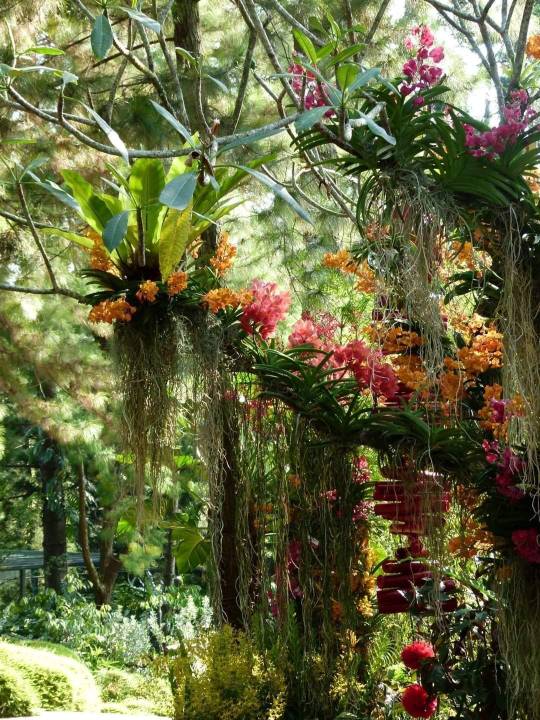
Epiphytic orchids, growing anchored to the trees at National Orchid Garden, Singapore
An epiphyte is a plant that grows harmlessly upon another plant (such as a tree) and derives its moisture and nutrients from the air, rain, and sometimes from debris accumulating around it. Epiphytes, that may be found in every major group of the plant kingdom, differ from parasites in that epiphytes grow on other plants for physical support and do not necessarily negatively affect the host.
The term epiphytic derives from the Greek epi- (meaning 'upon') and phyton (meaning 'plant'). Epiphytic plants are sometimes called "air plants" because they do not root in soil.
Photo: National Orchid Garden, Singapore 新加坡国家胡姬园
49 notes
·
View notes
Text

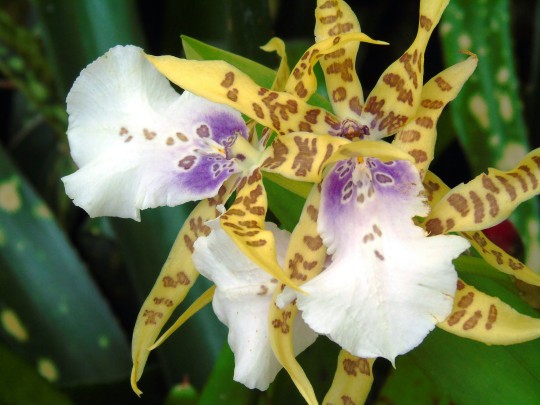
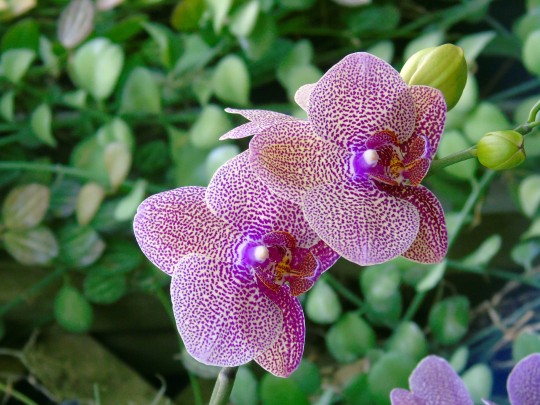




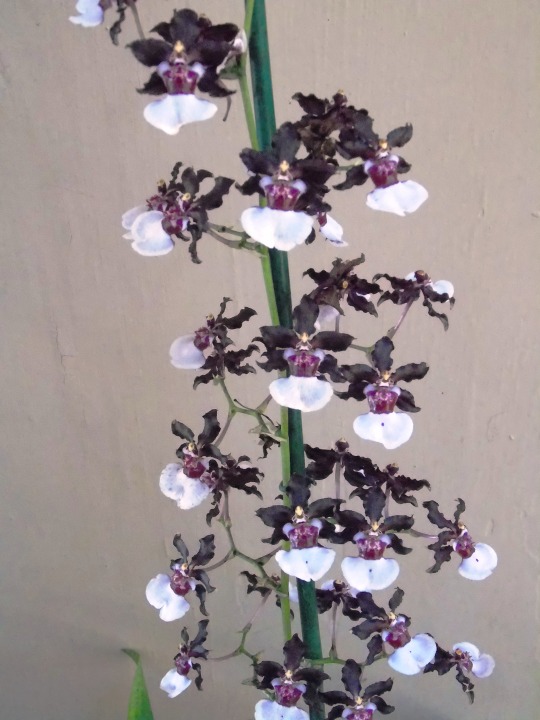
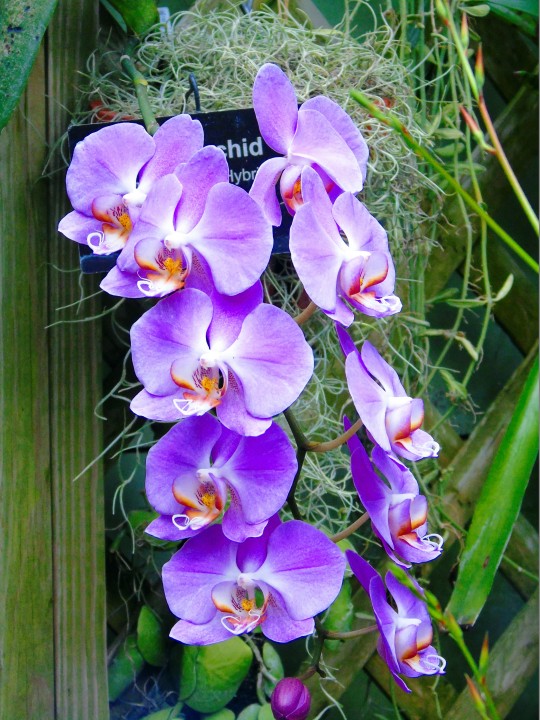














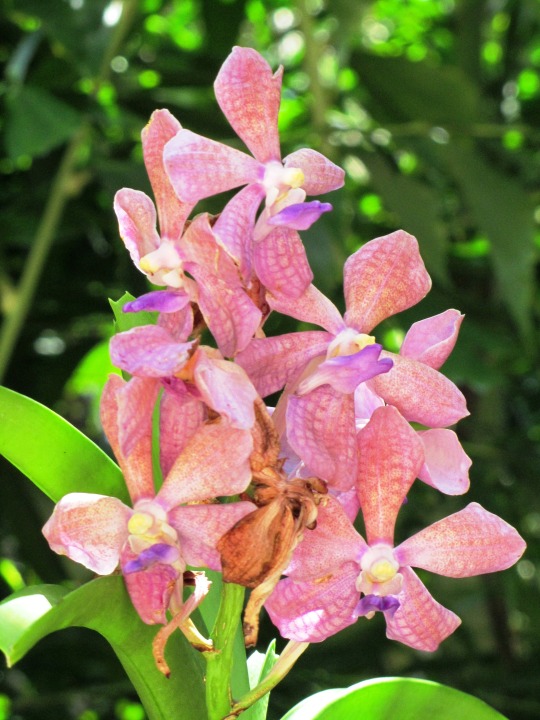
National Orchid Day
With their intricate blooms, orchids bring beauty and elegance to any setting, making them a versatile addition to any collection.
With more than 28,000 species, the orchid is a unique and interesting flowering plant that occurs worldwide. More than 200 species reside in North America, and many others can be found in hotter, more tropical climates. With their large, amazing blooms that often have curious shapes, orchids offer a complex range of beauty and color to the plant world.
National Orchid Day is here to celebrate this dazzling flower, as well as the challenging story of the family that inspired it all.
History of National Orchid Day
Although this is certainly a day to recognize and appreciate the beauty of this unique flower, National Orchid Day actually has an emotional story behind it as well. The day was established by a couple named Mike and Faith Young, who fell in love with the magnificent flower while volunteering at an orchid preserve on the outskirts of Chiapas, Mexico.
Later, when they were pregnant with their first daughter, they decided to name her Orchid in honor of their experiences with the beauty of this delicate plant. Sadly, baby Orchid did not make it through the birth process. From that time in April 2014, the Young family looked for ways to find beauty from tragedy.
The founding of National Orchid Day is one of the ways that the Youngs, along with their friends and family, have kept the memory of their little girl alive while, at the same time, bringing respect and attention to this amazing flower.
Take some time to observe National Orchid Day to show appreciation for this special flower as well as the special people in your life.
How to Celebrate National Orchid Day
Celebrate and enjoy National Orchid Day in a wide variety of ways, including some of these ideas:
Get or Give an Orchid
Flowering plants can add a particular kind of joy and delight to homes and orchids are no exception. Those who want to share in the allure and elegance of this special flower might want to consider getting one from a garden store and bringing it home. Or, even better, give an orchid as a gift to a beloved friend or family member in honor of National Orchid Day.
Show Care to Loved Ones
One special way to observe National Orchid Day might be to simply take the time to show friends and family members how much they are loved and appreciated. Since the day was founded in honor of a lost family member, it’s an especially poignant time to give an extra hug and say “I love you”.
Learn More About Orchids
Take some time on National Orchid Day to learn some more about this special flowering plant. Get started with some of these facts:
Orchids are believed to be one of the oldest families of flowering plants.
This magnificent plant has the tiniest seeds in the plant world.
Orchids can take from 5-7 years to bloom once started. Some bloom for months and others only hours.
The vanilla bean comes from a species of the orchid plant family.
Source
#National Orchid Day#orchids#Miami Beach Botanical Garden#Miami Beach#Florida#Lincoln Park Conservatory#Chicago#Illinois#Botanical Building#Balboa Park#San Diego#California#USA#flowers#orchid#Orchidaceae#travel#original photography#vacation#tourist attraction#landmark#16 April#NationalOrchidDay#blooming#flora#nature#cityscape
0 notes
Text
your muses aesthetic. list your muse’s aesthetic from tastes, smells, outfits, and sceneries. add as many subjects as you like, it can help with people tagging you in aesthetically pleasing things towards your muse.
tastes: traditional fire-nation cuisine. spicy fire-flakes, roasted pork, and hot tea infused with jasmine. dragon fruit, lychee, and mangoes, grilled sea pawns. aged fire nation wines with complex flavors of oak and spice. fire nation whiskey, intense and smoky, with hints of charred oak, toasted spices, and a touch of volcanic ashroasted chestnuts. green tea ceremonies, delicate jasmine tea, and rare white dragon jasmine tea leaves—a specialty of his father. rare spices from trees that are native to fire nation, including cumin, saffron, and cardamom.
smells: a scent of smoldering cinnamon, cloves, and star anise in the air. jasmine blossoms, lotus flowers, and orchids from the royal gardens. the crisp scent of autumn leaves and the smoky aroma of fire pits. herbal notes. a hint of sage, lemongrass, and mint leaves in herbal teas. sandalwood incense burning in meditation rooms. crackling hearth fires in the royal palace.
sights: volcanic landscapes. volcanoes looming on the horizon, with smoke rising from their peaks. intense flames swirling, casting shadows against the red walls. royal palace. opulent halls decorated with gilded ornaments, tapestries depicting ancient fire nation legends, and imposing thrones. fire nation technology—advanced warships, steam-powered machinery, and towering factories billowing smoke. traditional fire nation dances—graceful movements accompanied by the flickering light of torches and lanterns. colorful celebrations featuring elaborate firework displays, traditional music, and performances. endless amount of war memorials. monuments honoring fallen soldiers of the fire nation, with eternal flames burning in their honor. regal crimson robes with intricate gold embroidery, adorned with the fire nation insignia. messages of propaganda, supremacy, and strength through firebending. a recruitment poster featuring a soldier, with the caption, join the fire nation army and defend our sacred land.
sounds: the rhythmic sound of flames dancing in fire pits and torches. trumpets heralding the arrival of fire nation royalty, accompanied by drums and cymbals. war drums—thunderous beats echoing across training grounds, inspiring troops before battle. lightning crackling in the foreground. melodic tunes played on traditional fire nation instruments, the pipa and guzheng. the chirping of fire nation birds, the rustling of palm trees, and the distant roar of waterfalls. war machinery—clanking gears, hissing steam, and the rumble of warships off the shorelines. moments of quiet contemplation, where the only sounds are the soft rustle of leaves and the gentle crackle of embers. practicing the dizi, traditional flute in between training sessions.
sensations: the comforting heat of firebending flames against the skin during training sessions. luxurious fire nation silks and satins, smooth against the touch. intense warmth radiating from the earth's core during visits to volcanic hot springs. humid, sea breezes brushing against the skin from the coastlines. tactile connection—a sensation of firebending energy pulsing beneath lu ten's fingertips, responding to his every movement and command. resilient spirit and unwavering determination. a deep sense of connection to the spirits of fire. commitment to serving the fire nation. isolationism, a loneliness you cannot shake. failure is not an option. reluctant heroism, internal struggles between morality and obligations. inside of me, there are two dogs. one is mean and evil and the other is good and they fight each other all the time. when asked which one wins, i answer, the one I feed the most. ambiguous loyalties.
tagged by — me.
tagging: @hotknickers, @denouemente, @linghung, @hookedswords, @dropovers, @fearbend, @kniveds, @yourideaguy, @bowbend, @rotpoetry
9 notes
·
View notes
